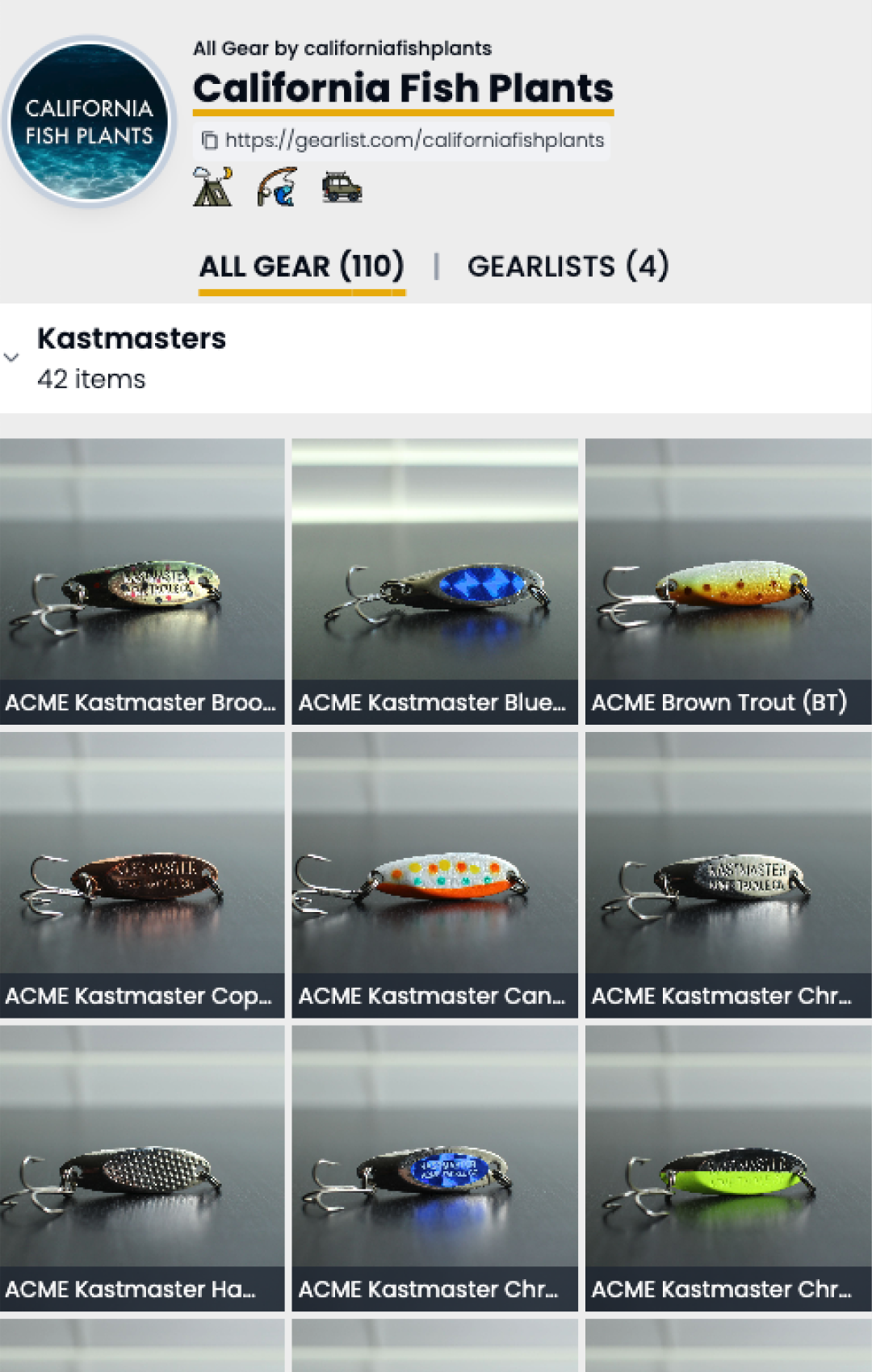Embark on a fishing odyssey at Los Banos Creek Reservoir, a hidden gem in the heart of the San Joaquin Valley. In the shadow of modest dimensions lies a haven for anglers, promising encounters with a diverse array of fish. Whether you’re a seasoned pro or dipping your toes into the world of fishing, Los Banos Creek Reservoir has a unique allure waiting to be explored.
📈 Latest Fish Plants
Fish here often?
How To Read Fish Plant Graphs
To interpret fish plant graphs effectively, consider the following key elements:
- Blue Vertical Bars and Numbers:
- Representation: The blue vertical bars on the graph represent individual fish plants.
- Weight Measurement: The associated numbers indicate the total weight of the plants in pounds (lbs.) that occurred during a specific week.
- Significance: Monitoring these bars helps identify weeks with higher planting activity, aiding anglers in selecting optimal times for fishing near recent plantings.
- Orange Trend Line:
- Purpose: The orange trend line represents the moving average of all fish plant activities at the specified location.
- Indicator of Activity: A rising trend line suggests a consistent increase in planting activity over the designated period. This indicates the potential for more catch opportunities and signifies a growing fish population over the weeks.
- Interpreting the Moving Average:
- Upward Trend: A rising moving average implies an upward trajectory in planting activity, indicating an increasing number of fish being introduced into the area. This suggests a positive outlook for anglers, as it implies a larger and potentially more accessible fish population.
- Downward Trend (Not Specified): The description does not provide information on the interpretation of a decreasing trend in the moving average. It might be beneficial to include information on what a decreasing trend could signify in terms of fishing prospects.
- No Data Present:
- Possible Explanations: If no data is visible on the graph, it may indicate that the location had no fish plants in the last three months. Alternatively, the absence of data could be due to non-disclosure of fish plants for that location.
- Natural Population: Some fishing areas in California rely on the natural growth of fish populations, and graphs may not show plants if this is the case.
- Graph Disclaimer:
- Data Source: The graphs reflect a combination of publicly disclosed data and estimates. Some locations may disclose fish plants without specifying exact amounts.
- Not Universal: Not all fishing areas have fish plants, and the natural growth of fish populations plays a significant role in many California fishing locations.
Understanding these elements will empower anglers to make informed decisions about when and where to fish based on historical fish plant data.
Note: If no data is present in the graph above, this location may not have had any plants the last 3 months, or may not have publicly disclosed plants. Graphs reflect both publicly disclosed data and estimates, as some locations disclose plants, but not exact amount.
🗺️ Map & Fishing Location
Fish to Find:
- Largemouth Bass: The undisputed stars of the show, these feisty predators lurk in weed beds, around rip-rap shorelines, and near underwater structures.
- Crappie: Schooling bandits that gather around docks, bridges, and lily pads, particularly active in spring and fall. Minnows or jigs are their weakness.
- Bluegill: Scrappy panfish that love the shallows and cover. Seek them near reeds, docks, and overhanging trees for an exciting tug-of-war.
- Channel Catfish: Whiskered bottom-feeders that crave nightcrawlers, stink baits, or cut bait near drop-offs and the dam.
- Rainbow Trout: Stocked during the winter months, making them a seasonal delight. Look for them near the dam or in deeper sections.
Local Intel:
- Early Mornings and Evenings: The golden hours for bass, crappie, and bluegill, especially during the summer heat.
- Shoreline Secrets: Don’t underestimate the banks! Cast parallel to weed lines and drop-offs for surprising catches, especially for bass and bluegill.
- Tournament Time: Hone your skills and perhaps earn some bragging rights! Bass fishing derbies are held here throughout the year.
- Be a Responsible Angler: Practice catch-and-release for bass and trout, especially during spawning season, to help maintain a healthy fish population.
Unique Twists:
- Bait Restrictions: Unlike some California lakes, Los Banos Creek Reservoir prohibits live minnows and fish-like baits. Focus on artificial lures, flies, or bait alternatives like nightcrawlers.
- Seasonal Shifts: The fish aren’t stationary. Spring brings hungry trout to the dam, while summer bass hide in the shade. Fall crappie love the shallows, and winter catfish prowl near the bottom. Adjust your tactics accordingly.
- Boat or No Boat: Both options are open! Rent a boat to access the dam and deeper areas, or explore the shoreline coves from the bank. Fishing kayaks are also popular here.
Prime Locations:
- The Dam: A magnet for rainbow trout, especially in spring and fall. Troll with downriggers and flasher-lure combos for the best results.
- Spillway Area: Fast-moving water attracts hungry catfish, especially at night. Use heavy sinkers and strong tackle to control your line.
- Fishing Piers: Cast a line off the piers for crappie, bluegill, and even the occasional bass. Keep an eye out for baitfish activity!
- Rocky Shorelines: Bass and bluegill love the cover and ambush prey along these areas. Use crankbaits, jigs, or topwater lures to entice them out.
Remember, this is just the bait to get you started. Explore, experiment, and most importantly, have fun! Ask fellow anglers, park rangers, or local bait shops – they’re treasure troves of hidden knowledge and love sharing their Los Banos Creek Reservoir stories.
With a little preparation and a sprinkle of local wisdom, you’ll be reeling in memories (and maybe a trophy fish or two) from your Los Banos Creek Reservoir adventure. Tight lines!



